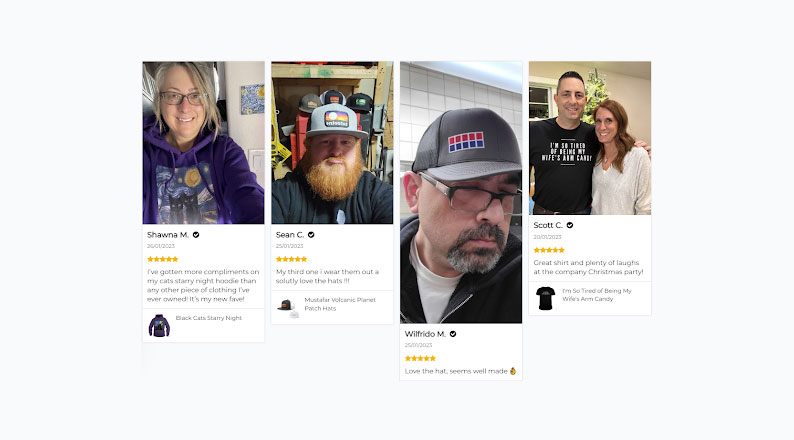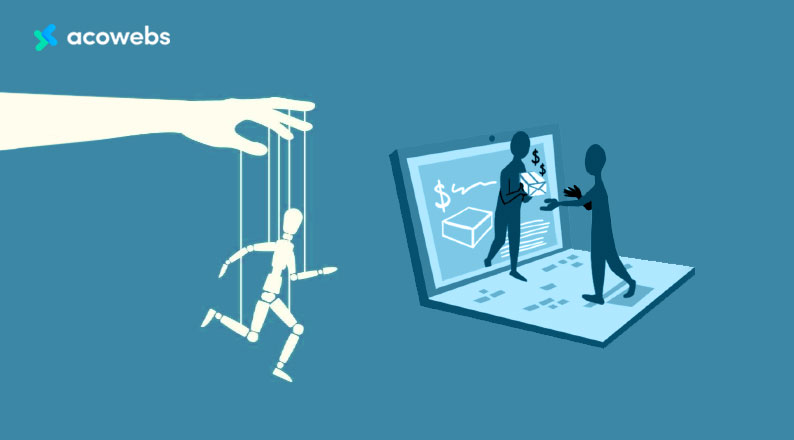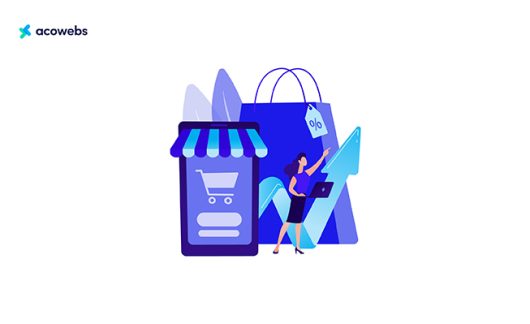Table of Contents
In your normal day-to-day activities, you are constantly being persuaded. While you might not be aware of it, a lot of daily interactions and discussions involve persuasion.
Your effectiveness as a main persuader will increase as you gain more knowledge of the tricks of the trade.
Your business, connections, earnings, profession, and relationships—basically every situation that includes understanding and interacting with another person—will benefit from developing this talent.
The ability to persuade sets successful people apart from everyone else. Influencing others is a science, not luck or magic.
Not just marketers and salespeople; everyone should learn persuasion psychology. It is a constant throughout our life. It permeates all aspects of our lives, from convincing our relatives to dine to persuading friends to see a new film or persuading recruiters at a job interview.
The requirement for persuasiveness in eCommerce firms shouldn’t come as a surprise. After all, your goal is to persuade customers to swap their hard-earned money for your goods or services. Using psychology in eCommerce has always been a determining factor in shaping your success. However, what exactly is persuasion psychology, and how can you benefit from it?
In this article, we will discuss the meaning of persuasion psychology, its principles, theories and how it works in eCommerce.
What Is Persuasion Psychology
A process in which a person, brand, or other elements affect another person’s behavior or opinions is referred to as persuasion. Remember that persuasion is more of a negotiating or influencing than something that happens under pressure.
The study of how to persuade others through communication is known as persuasive psychology.
Recognizing how our own emotions and prejudices affect our capacity for persuasion and learning how to utilize words and nonverbal clues to sway other people’s emotions and biases are both necessary components of this skill.
Although the Greeks were the first to study persuasion, it has gained new significance in the digital age as companies actively rely on online communication to attract customers.
E-commerce companies may create more successful marketing campaigns, online experiences, and sales tactics by comprehending the psychology of persuasion.
Businesses may produce more persuasive material and learn how to tailor their messages more effectively by knowing how persuasion works.
E-commerce companies can also utilize psychological persuasion techniques to connect with clients and foster a stronger sense of brand loyalty.
Understanding persuasion may ultimately help organizations increase revenue, expand their clientele, and accomplish their targeted goals. Below are the six elements of persuasion psychology that show how it works in eCommerce.
Elements of Persuasion
In online marketing, “persuasion” is frequently used to show any attempt by a website or online retailer to alter your attitude toward or conduct concerning a particular objective without using coercion or fraud.
Most importantly, conversions revolve around persuasion. Let’s examine some of the elements of persuasion psychology and how it works in eCommerce to help you increase your conversion rates.
1. Source
In the technique of persuasion, credibility and quality are essential. If a customer doesn’t trust you, no amount of persuasive strategy will persuade them to buy from you.
However, if you are widely regarded as trustworthy, truthful, and accurate, it will be simpler for your clients to like you—and guess what? People you get along with are much simpler to persuade.
2. Message
A sale might be made or lost depending on what you say. The content of your emails, advertisements, and other materials will significantly impact whether or not someone chooses to purchase from you.
The finest persuasive writing establishes credibility and elicits emotion by fusing facts and feelings.
3. Medium
How you communicate with customers will affect how well your message is received. Choose your platforms wisely if you use email, social media, or another channel.
4. Public
Understanding your audience is essential for effective persuasion. If you don’t understand why they demand something, it’s tough to convince them to buy it.
5.Effect
What are you trying to encourage customers to do? Without a clear purpose in mind, it might be challenging to assess the success of your efforts.
Principles of Persuasion
A visitor to your online store has already shown a crucial quality by simply showing up: he\she has some business intention.
When he\she reaches your e-commerce website, the initiative is in your hands. Utilizing this to your advantage, do your promotions and messages convince customers to make a purchase?
Below are six principles of persuasion psychology and how it works in eCommerce.
1. Reciprocity
According to Cialdini’s first persuasion principle, people are naturally inclined to repay debts and extend favors—to treat others as they have treated us.
According to the principle of reciprocity, people are compelled to give others discounts or concessions if those same individuals have given them favors. Persuasion psychology emphasizes that humans detest feeling obligated to others to explain this.
Consider that you manage a well-read site that provides people with practical knowledge to enhance their lives. Visitors to this website can access all of this content without charge.
Based on the principle of reciprocity, your blog increases the likelihood that website visitors will feel compelled to purchase from your store, resulting in a conversion for you.
I’ll stroke your back while you scratch mine. If you initially help someone else, that person is more likely to help you.
BonLook provides a free virtual try-on so that customers can see how they might look from the convenience of their homes.
And it’s free. This service is offered by BonLook utterly free of charge, which is crucial for attracting customers. This persuasion psychology prompts immediate appreciation, which increases customers’ propensity to make a buy.

BonLook’s Use of Reciprocity Principle – Image Credit: BonLook
Commitment
According to the commitment principle, people have a strong desire to be regarded as reliable. As a result, we are far more likely to follow through on our promises once we have openly pledged to something or someone (hence, consistency).
The commitment principle and how it works in eCommerce can be explained psychologically by the fact that individuals associate commitment with their personality.
In addition, marketers have discovered how to apply this second Cialdini principle to boost traffic and conversions.
They raise the possibility that those website visitors would eventually view themselves as consumers by encouraging them to devote themselves to something relatively little (and typically free), like a guide or whitepaper.
Continuing with an offer for a paid consultation is simpler following that shift in perspective.
Social Proof
The use of social proof in eCommerce is among the most well-known instances of persuasive strategies in action. When this happens, we are more likely to act if we observe others operating in the same way.
Humans have a strong sense of belonging to a group. According to research that identifies social proof as one of the six universal laws of persuasion, people are more likely to purchase a product if it is strongly recommended, specifically if that recommendation comes from an acquaintance or peer.
Ensure to share analyses, customer testimonials, and sales figures to use social proof and generate favorable perceptions of your brand. Therefore, it can effectively convince people to buy from your shop.
Safety in numbers is the basis for this tenet. For instance, if our teammates stay late on the field, we are likely to say as well. If a donation jar already has money, we are going to donate, or if a restaurant is busy, we are more likely to dine there.
In this concept, we are presuming that since someone else is doing it, it must be acceptable. We can use this similarity to the “herd mentality” to our advantage.
Take a look at how BustedTees uses the principle of social proof.

BustedTees Principle of Social Proof – Image Credit: BustedTees
Authority
The Authority concept is different from the Social Proof principle in that it focuses on the quality of the endorsement rather than displaying absolute numbers.
But not just famous persons or professors can speak with authority. Many e-commerce websites display security certificate badges granted to them by outside parties. These outside parties are regarded as security authorities and promote openness.
In our complicated culture, we frequently rely on specialists for our lack of knowledge and skill. This persuasion psychology translates into a solid readiness to follow instructions and advice from superiors.
BeardGang Members excels at doing this. Their landing page has a classy, gentlemanly appearance that appeals to their intended audience.
BeardGang Use of Authority Principle – Image Credit: BeardGang Members
Scarcity
Individuals will want something more if it is challenging to acquire. A thing appears attractive and excellent when it is scarce.
Apple has a great understanding of how to use this idea. Throughout each new product introduction, there are absurdly long lines of people waiting to get in, generating many buzzes and free presses.
Nobody wants to believe that they are being left out. Through finite supply, time-limited promotions, and exclusive offerings, scarcity appeals to consumers’ innate FOMO.
By indicating how many available things are there, Etsy also makes excellent use of this idea. They produce a sensation of scarcity when this quantity is low. Customers feel pressured to act quickly because they fear the product will run out shortly.

Etsy’s Use of the Principle of Scarcity – Image Credit: Etsy
Liking
The Liking principle, similar to the Authority and Social Proof principles, only applies to arguments made by real-life acquaintances. We consider a friend’s advice seriously because doing so confirms our friendship.
What difference does liking someone make? According to Cialdini, it affects your likelihood of being affected by that person. Likeability is based on a superficial interest, such as physical appearance or similarity in behavior.
Conversions can be affected by this idea in the following ways: A business that wishes to increase conversion rates needs to make an excellent “About Us” page.
That may sound silly, but it makes total sense once you realize that an organization can use its “About Us” page to inform potential customers about the connections between its employees and site users.
Because similarity is a fundamental component of like, having an intense “About Us” page is essential.
Benefits of Using Persuasion Psychology
Most people are aware of persuasion, but few take the time to consider how it operates or why it is so powerful. A growing area of psychological study called “the science of persuasion” has revealed some unexpected truths about what motivates people to agree.
You may create an online store more prone to persuade customers to perform the activities you want them to do by understanding how people perceive things and what drives them.
Persuasion is effective only when its goals are reasonable and consider the audience’s values, beliefs, motives, and attitudes. The following five main objectives can be accomplished through persuasion psychology.
Bringing About Uncertainty
When facing an audience that strongly disagrees with her point of view, the most effective strategy for a communicator is to undermine some of their assumptions.
This situation is typical of closed-minded audiences. In such a scenario, reducing comfort with a specific audience attitude is possible.
Resistance reduction
It is feasible to sway an audience from opposing the communicator’s viewpoint to being neutral when that opposition is modest.
This idea is frequently accomplished by requesting that the audience accept the speaker’s opinion as valid, even if they disagree with it.
Alter Your attitude
This objective is reachable if a communicator deals with an open-minded and impartial audience, not profoundly devoted to any attitude.
Increase Attitude
It is relevant when the listener is somewhat sympathetic to the persuader’s point of view.
To maintain the current mindset and prevent other persuaders from swaying an audience already won over, it would be appropriate to construct a message that reinforces the truth of an opinion.
Gaining Practice
The objective is to influence an audience that is overwhelmingly sympathetic to a persuader’s viewpoint to act in a way that is consistent with that attitude.
Military personnel and salespeople are typical instances of people who have been brainwashed; even though these people already have a certain mentality, they still need to be further persuaded to act in a certain way.
Such audiences will likely use word-of-mouth to influence people who are less convinced or weaker.
Theories of Persuasion
To comprehend how persuasion operates and to create more effective persuasive arguments, a variety of theories or models can be used. Here are the top most popular theories of persuasion psychology.
Social Judgment Theory
Muzafer Sherif and Carl Hovland created the social judgment theory in the 1960s to gauge a person’s receptivity to a message (or a persuasion).
They discovered a continuum between “latitudes of rejection” (disagreement), “latitudes of non-commitment” (ambivalence), and “latitudes of acceptance” that encompassed people’s attitudes, beliefs, and conduct (agree).
The idea is straightforward: If someone already agrees with what they are being persuaded of, they are more likely to be open to persuasion (or marketing messaging).
Sherif and Hovland concluded that understanding how much a customer already supports or disagrees with your opinion is essential for effective persuasion. It won’t be easy to inspire a group of people if their points of view are too dissimilar.
Theory of Cognitive Dissonance
This hypothesis can be linked to a well-known book by Leon Festinger in 1957. It supports the notion that, with the correct social pressure, a consumer may be persuaded to change their mind and behavior completely (especially if they hold opposing views simultaneously).
Frymier and Nadler recognized three prerequisites for it to succeed as follows:
Aversive Consequences
It refers to Strong and enough repercussions for remaining the same, such as losing out on a lot.
Freedom of Choice
Customers must not feel pressured or forced to choose. It must appear to be their idea.
Insufficient external justification
A customer should not purchase something because of too many external factors beyond their control.
The Model of Elaboration Likelihood
This model, which Petty and Cacioppo created in 1986, sheds light on how much mental effort a person spends on processing a message’s content. An individual has two options ;
Route central – When communication is examined in great detail
The peripheral route (peripheral cues) – When a piece of information is read but not understood
Everyone would choose the central path in a perfect world, but that doesn’t always happen. Simplicity is essential because it becomes hard for a person to evaluate a message if someone doesn’t grasp it.
Because they have made the decision not to consider the statement, someone may also take the side way. To persuade someone effectively, you must give them a reason to believe your communications.
Conclusion
The various persuasion techniques work well since they appeal to our irrational tendencies. However, remember that persuasion doesn’t come from a single message that has been optimized.
It entails making an emotional connection with your clients for e-commerce merchants. It involves persuading each consumer to take the following tiny step, then another, until they convert and carry out the desired action.
But a fantastic product or offer is generally the main driver that generates customer pleasure, loyalty, and sales. All marketing initiatives will only succeed if they promote a development that offers customers real value.
The employment of persuasive strategies can aid eCommerce enterprises in not just raising sales but also establishing credibility and trust with their clients.
Businesses can demonstrate to potential clients that they are reputable and trustworthy by employing persuasive strategies like showing evaluations from reliable sources or offering customer testimonials.
This practice can improve client retention rates and help create long-lasting customer relationships.
Acowebs are the developers of the WooCommerce Variation Swatches Plugin that can transform your product attributes and select dropdowns with the efficient and easy-to-use User Interface. It also has developed various other plugins like WooCommerce Product Table, the multi-currency converter plugin that shows prices in the user’s local currency and helps customers connect to desired products faster. It helps customers quickly compare products and make a judgment easily.











 Login
Login
 Cart
Cart








